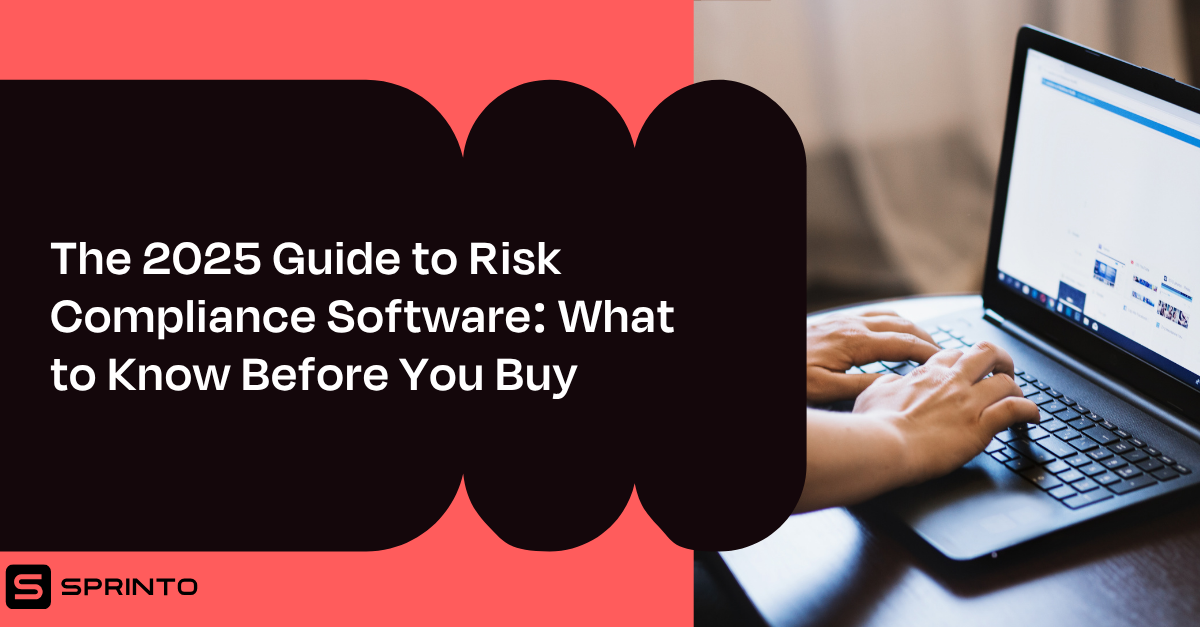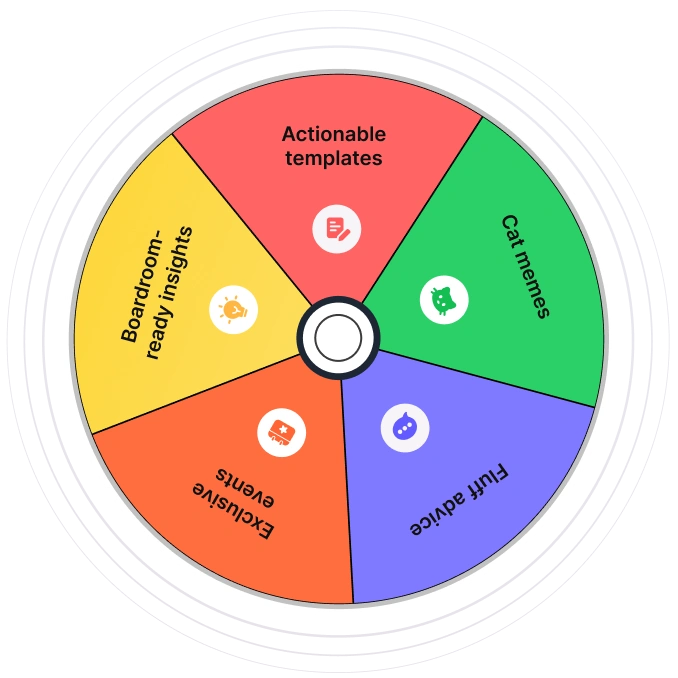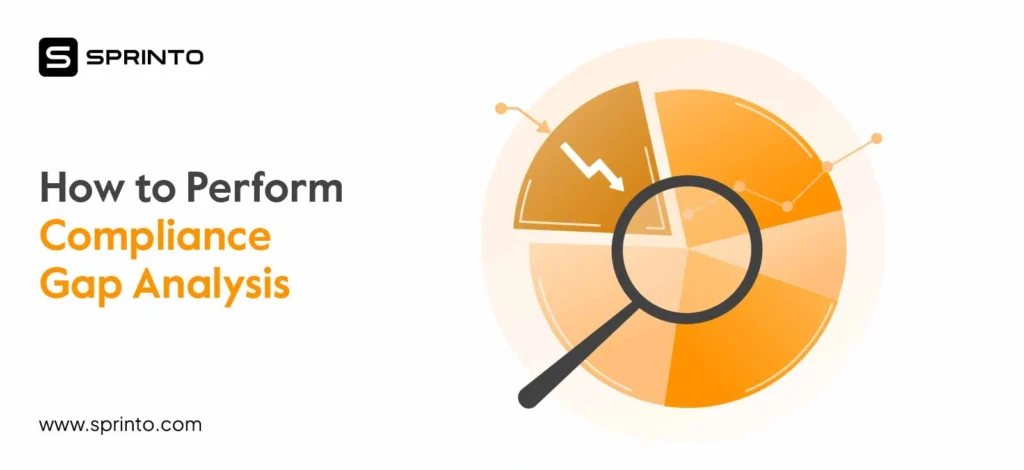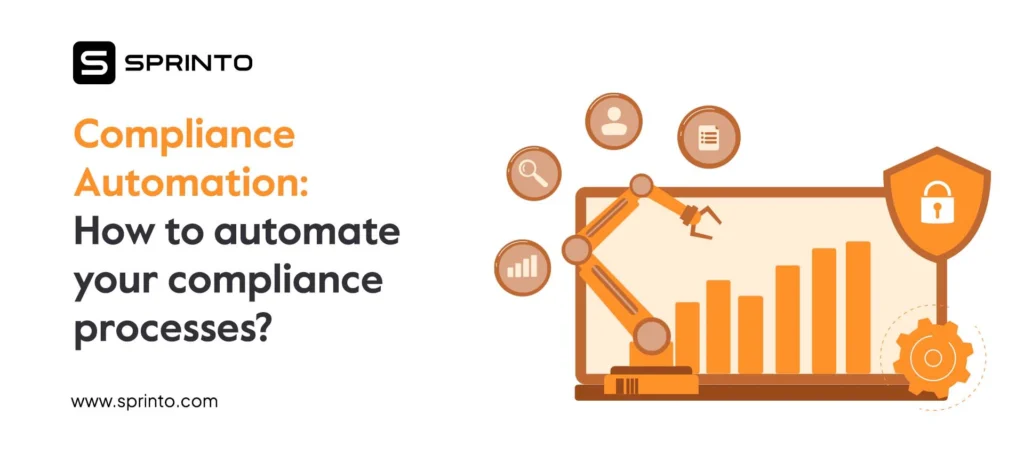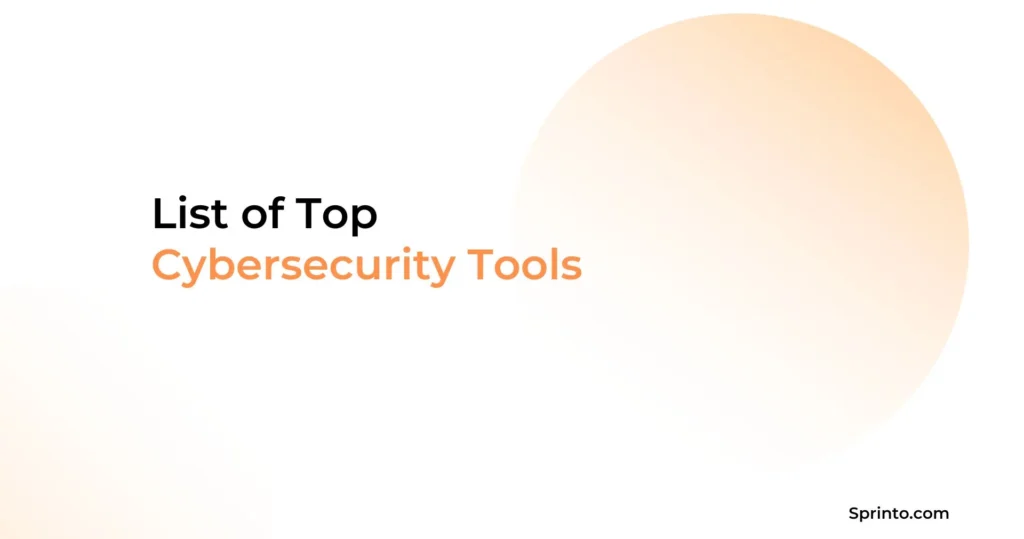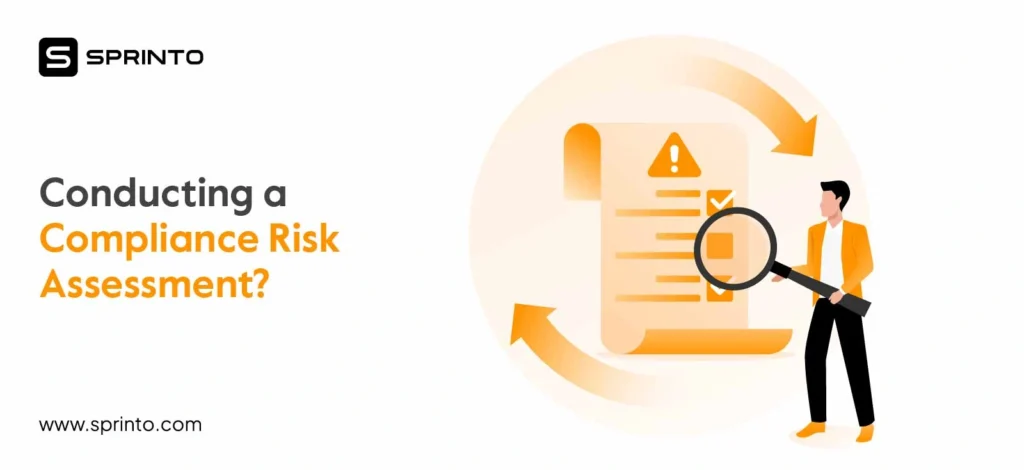Managing risk and staying compliant used to mean juggling spreadsheets and chasing updates across endless email threads. It worked when regulations changed slowly and teams were small. But today, the pace is too fast and the stakes are too high.
Businesses now face new privacy laws, complex vendor networks, constant security threats, and manual tracking can’t keep up.
That’s why more companies are turning to dedicated risk and compliance software. It offers one place to see every control, collect evidence automatically, and stay audit-ready always. Read on to learn everything you need to know before you buy risk compliance software.
- Risk compliance software centralizes risk management. It helps identify, track, and reduce risks through automated monitoring, control mapping, and continuous evidence collection.
- The best platforms automatically collect evidence, monitor controls continuously, and reuse documentation across multiple frameworks.
- Our 2025 shortlist shows how top risk compliance platforms differ in speed, flexibility, and ROI so that you can match the right tool to your risk and audit needs.
What Is Risk Compliance Software?
Risk compliance software helps organizations identify, track, and reduce risks while meeting regulatory obligations. Risk platforms integrate with your existing systems to monitor controls, flag issues, and keep evidence audit-ready. They also continuously track your compliance with SOC 2, ISO 27001, HIPAA, PCI DSS, GDPR, and NIST standards.
While risk compliance software and general governance, risk, and compliance (GRC) platforms overlap, there are some essential differences between the two:
| Risk Compliance Software | General GRC Platform | |
| Primary Purpose | Manage organizational risks and ensure compliance with external regulations and internal policies | Oversee enterprise-wide governance, risk, and compliance functions in one umbrella system |
| Scope | Targeted: risk assessment, control mapping, continuous monitoring, and audit readiness | Broad: includes strategic governance, policy management, ethics programs, board oversight, and enterprise risk |
| Deployment and Complexity | Lighter and faster to implement; ideal for teams moving off spreadsheets or point solutions | Typically larger, multi-module suites that require more configuration and cross-department buy-in |
| Typical Users | Security, IT, and compliance teams | Executive leadership, risk committees, and enterprise compliance offices |
Why Businesses Need Risk Compliance Software
Due to rising regulatory complexity, increased third-party risks, manual reporting challenges, and a growing demand for real-time visibility, businesses need risk compliance software. Here are more details:
- Rising regulatory complexity: Standards like SOC 2, ISO 27001, and HIPAA are frequently updated, and they rarely get simpler. Risk compliance software helps you keep pace by tracking requirements automatically and storing the evidence auditors expect. This means teams do not have to scramble every time a rule changes.
- Increased vendor and third-party risks: Every cloud provider, contractor, or software vendor adds another doorway into your data. A dedicated platform makes it easier to vet partners and monitor vendor risk. It also allows you to prove that the proper safeguards are in place across your supply chain.
- Audit fatigue and manual reporting challenges: Spreadsheets and email chains turn compliance into a time-consuming slog for your team. Centralized software replaces these scattered records with one source of truth, cutting down repetitive work.
- Growing demand for real-time compliance visibility: Boards and regulators no longer settle for once-a-year reports. That’s where real-time dashboards help. They show exactly where risks stand and which controls are working, ensuring compliance is a continuous, visible process.
Key Features of Risk Compliance Software
When searching for a risk compliance platform, look for features such as risk register and assessment, policy and control mapping, vendor risk management, automation, and reporting.
Risk register and assessment modules
These give you a structured way to capture every identified risk, rate its likelihood and impact, and assign owners for follow-up.
Policy and control mapping
Your tool should link policies and controls to different frameworks, so one control update can satisfy several requirements simultaneously.
Third-party risk management (TPRM)
Third-party relationships are often the weakest link. TPRM features help you track vendor assessments, contracts, and attestations, spotting gaps before they become incidents.
Automated evidence collection
Risk compliance software connects to cloud services, ticketing systems, and security tools to pull proof of compliance without constant manual uploads. Examples of collected data include access logs, change records, and security scans.
Dashboards and executive reporting
Compliance software generates visual summaries and exportable reports. These give executives, auditors, and regulators instant insight into overall risk posture and control effectiveness. It becomes much easier to share compliance progress and justify decisions.
Top 5 Risk Compliance Software in 2025
Sprinto, LogicGate, Diligent One Platform, Resolver, and Hyperproof will be the top five risk compliance tools in 2025.
1. Sprinto
Sprinto helps fast-growing companies automate audits and maintain continuous compliance across 40+ frameworks. Its unified platform centralizes controls, risks, vendors, and policies while 300+ integrations enable real-time monitoring and automatic evidence reuse—reducing manual work and cutting audit prep time from months to weeks.
Key features
- Automation-first platform: Maps and monitors controls across 40+ frameworks (SOC 2, ISO 27001/17, HIPAA, GDPR, and NIST) with continuous evidence collection.
- Integrated risk assessment: Connects to your cloud stack to scope entity-level controls, surface gaps, and auto-configure checks from day one.
- Low-touch compliance operations: Adaptive automation organizes and nudges tasks in priority order, keeping teams out of spreadsheet chaos.
- Expert-led onboarding and audits: Dedicated compliance specialists guide implementation and offer audit-ready evidence directly from the dashboard.
- 200+ integrations: Works with major cloud providers and business apps for near-real-time monitoring and automated evidence capture.
- Async auditing: Auditor access is built into the platform so evidence can be reviewed continuously, speeding certification timelines.
Pros
- Multi-framework coverage lets fast-growing companies layer new standards without restarting the compliance program.
- Automation reduces manual control checks and eliminates the typical “audit crunch,” cutting preparation time significantly.
- Hands-on advisory team provides practical guidance, not just software, which is rare among compliance tools.
- Direct auditor portal shortens the audit cycle and lowers external audit costs.
Cons
- Built for cloud-first environments. On-premises infrastructure requires extra setup or custom integrations.
- Sprinto’s deep automation setup can require an initial learning curve for smaller or less mature compliance teams.
G2 rating
4.8/5 (1,435 reviews). Governance, Risk, and Compliance category leader, based on recent G2 listings.
2. LogicGate
LogicGate Risk Cloud is a no-code GRC platform built for fast adaptation. It allows teams to design and adjust risk workflows without developer help.
Key features
- No-code GRC platform with over 40 pre-built applications for enterprise, cyber, and third-party risk programs.
- Highly customizable workflows that allow risk teams to design or adjust processes without waiting on IT support.
- Automated evidence collection and reporting speeds audits and reduces manual tracking.
- Risk Cloud Quantify adds financial impact analysis to prioritize high-value mitigation work.
- Spark AI and graph database enable quick insights and relationship mapping across risks, controls, and vendors.
Pros
- Highly flexible no-code workflows, which are ideal for fast-changing risk programs.
- Strong third-party risk features with unified cross-domain visibility.
- It allows users to link and connect multiple workflows for a holistic view of risk and controls.
Cons
- Evidence collection requires more manual input than some rivals.
- Deep customization can add a learning curve and occasional slowdowns.
- Custom dashboards need extra configuration.
G2 rating
4.6/5 (181 reviews).
3. Diligent One Platform
Diligent integrates governance, risk, compliance, and audit into one AI-powered workspace, so boards and executives can see every risk in a single view and act quickly on it.
Key features
- Unified GRC hub that combines board reporting, audit, risk, and compliance in one space.
- Ready-made frameworks and templates in a pre-built risk library.
- Automated task routing that assigns and tracks sign-offs with alerts to keep projects on schedule.
- Integrated data sources that pull evidence directly from Excel and major cloud apps for real-time updates.
- 24/7 global support, multi-language assistance, and continuous monitoring for large, distributed teams.
Pros
- Robust automation for audits and board reports, reducing manual prep work.
- Post-implementation support includes quarterly follow-ups, which stand out for ongoing customer care.
- Teams can build project-specific workflows and integrate surveys or questionnaires directly, avoiding extra software.
Cons
- Reporting is split across multiple modules, which forces users to piece together data for a single report.
- Templates and risk libraries cover common industries but require extra work for niche or highly specialized sectors.
- Large projects can experience slow load times, especially when several users edit or review simultaneously.
G2 rating
4.3/5 (143 reviews).
4. Resolver
Resolver is a risk-intelligence platform built to spot threats early, link incidents to business impact, and help companies bounce back quickly from crises. It combines risk, compliance, security, and investigations in one system to reduce incident costs and protect reputation.
Key features
- End-to-end incident and investigation management, from first report to root-cause analysis and corrective action tracking.
- Real-time risk analytics that quantify financial impact, helping leaders prioritize migration and show ROI.
- Configurable regulatory library for mapping obligations to specific controls across multiple jurisdictions.
- Integrated security and brand-protection modules to monitor physical threats and online reputation on the same platform.
Pros
- The investigations module has been praised for cutting pilferage rates. One retailer cited a 30% drop in theft over three years.
- Training and onboarding are fast. Some teams reported that new hires were fully trained in under two hours.
- Account managers provide ongoing strategy sessions, not just tech support, to refine risk programs as threats evolve.
Cons
- Initial implementation is time-intensive and often needs dedicated internal admins or paid professional services.
- Reporting dashboards are powerful but not intuitive and require extra setup or external BI tools for deep analysis.
- Search and filtering in large risk libraries can be slow or limited, especially for advanced queries.
G2 rating
4.3/5 (170 reviews).
5. Hyperproof
Hyperproof is a cloud-based compliance operations platform that helps teams manage multiple frameworks, automate evidence collection, and stay audit-ready.
Key features
- Supports 118+ compliance frameworks with cross-mapping to reuse evidence across standards like SOC 2, ISO 27001, HIPAA, and GDPR.
- “Hypersync” integrations (Jira, Slack, ServiceNow, Okta, and more) automate evidence collection and control monitoring.
- AI tools automate security questionnaire responses and build a live customer trust center.
- A central risk register links risks to controls for real-time mitigation tracking.
Pros
- Fast deployment, with many users completing full framework setup in under three months.
- Evidence reuse across multiple standards sharply reduces duplicate documentation.
- Customers report significant audit prep savings, often hundreds of hours per cycle.
Cons
- Limited dashboard and reporting customization for complex needs.
- Steep learning curve for first-time or non-technical users.
- Lacks Hypersync integrations for some niche systems, requiring manual steps.
G2 rating
4.5/5 (194 reviews).
How to Choose the Right Risk Compliance Platform
Here are our five golden rules for choosing the right risk compliance tool:
- To ensure multi-framework support, your tool should map required standards and crossovers, like SOC 2 plus HIPAA or GDPR.
- Choose a platform proven to handle your scale, whether you’re a 10-person startup or a multi-region enterprise.
- Look for automation that continuously tests controls and reuses evidence across audits.
- Verify integrations with the exact tools you use.
- Check track record for rapid onboarding, ongoing expert support, and adding new frameworks as regulations evolve.
How Sprinto Simplifies Risk and Compliance
Choosing the right platform is ultimately about confidence. Confidence that audits will pass, risks will stay visible, and manual work will not slow growth. Sprinto delivers that certainty.
Here’s a look at Sprinto’s value compared to other platforms:
| Tool | Time to Implement | Return on Investment | Average Discount |
| Sprinto | 3 months | 14 months | 20% |
| LogicGate | 4 months | 14 months | 20% |
| Diligent | 3 months | 17 months | 12% |
| Resolver | 6 months | 17 months | 8% |
| Hyperproof | 3 months | 13 months | 14% |
Sprinto’s record of fast onboarding, expert guidance, and automation-first approach means you can reach compliance weeks sooner and stay that way with minimal effort.
For teams scaling quickly or juggling multiple frameworks, Sprinto turns compliance into a background process. The result is more time for product, customers, and growth.
Want to witness Sprinto in action? Book a demo to see how compliance automation can save you time and money.
FAQs
1. Is risk compliance software the same as GRC software?
Not quite. GRC platforms cover governance, risk, and compliance across the whole enterprise. Risk compliance software focuses specifically on managing risk and meeting regulatory standards, so it’s narrower and easier to deploy.
2. Who uses risk compliance software?
Security, compliance, and risk teams use risk compliance software daily. Finance, legal, and operations leaders rely on it for audit prep, vendor risk reviews, and board reporting.
3. What frameworks do these tools cover?
Most leading GRC tools support major standards such as SOC 2, ISO 27001, HIPAA, PCI DSS, GDPR, and NIST. They also often let you add industry-specific or custom frameworks.
4. Do small businesses need risk compliance software?
Yes, especially if they handle sensitive data or sell to enterprise customers. Small teams gain from automated evidence collection and faster certifications, which can open doors to bigger deals and reduce legal risk.
Sucheth
Sucheth is a Content Marketer at Sprinto. He focuses on simplifying topics around compliance, risk, and governance to help companies build stronger, more resilient security programs.
Explore more
research & insights curated to help you earn a seat at the table.



